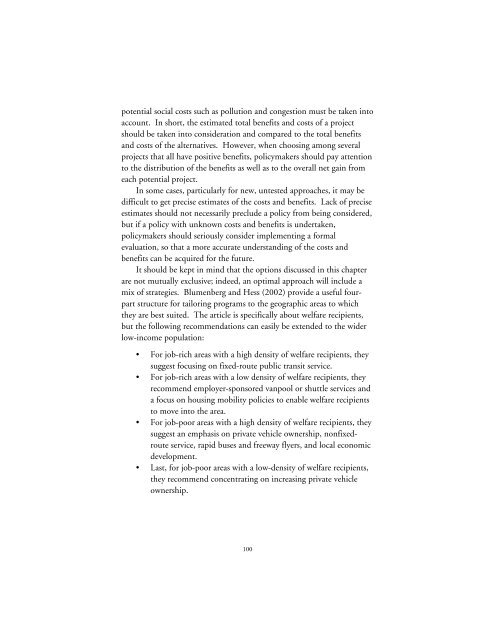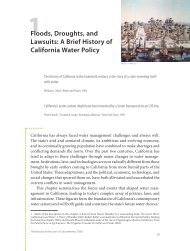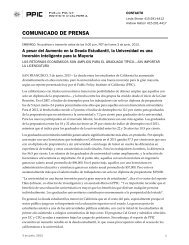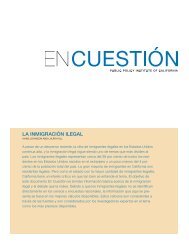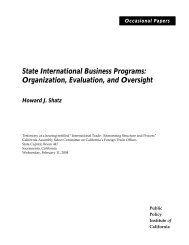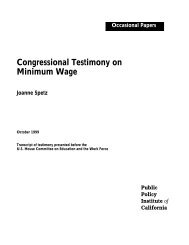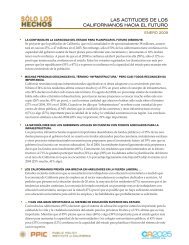Transportation Spending by Low-Income California Households ...
Transportation Spending by Low-Income California Households ...
Transportation Spending by Low-Income California Households ...
You also want an ePaper? Increase the reach of your titles
YUMPU automatically turns print PDFs into web optimized ePapers that Google loves.
potential social costs such as pollution and congestion must be taken into<br />
account. In short, the estimated total benefits and costs of a project<br />
should be taken into consideration and compared to the total benefits<br />
and costs of the alternatives. However, when choosing among several<br />
projects that all have positive benefits, policymakers should pay attention<br />
to the distribution of the benefits as well as to the overall net gain from<br />
each potential project.<br />
In some cases, particularly for new, untested approaches, it may be<br />
difficult to get precise estimates of the costs and benefits. Lack of precise<br />
estimates should not necessarily preclude a policy from being considered,<br />
but if a policy with unknown costs and benefits is undertaken,<br />
policymakers should seriously consider implementing a formal<br />
evaluation, so that a more accurate understanding of the costs and<br />
benefits can be acquired for the future.<br />
It should be kept in mind that the options discussed in this chapter<br />
are not mutually exclusive; indeed, an optimal approach will include a<br />
mix of strategies. Blumenberg and Hess (2002) provide a useful fourpart<br />
structure for tailoring programs to the geographic areas to which<br />
they are best suited. The article is specifically about welfare recipients,<br />
but the following recommendations can easily be extended to the wider<br />
low-income population:<br />
• For job-rich areas with a high density of welfare recipients, they<br />
suggest focusing on fixed-route public transit service.<br />
• For job-rich areas with a low density of welfare recipients, they<br />
recommend employer-sponsored vanpool or shuttle services and<br />
a focus on housing mobility policies to enable welfare recipients<br />
to move into the area.<br />
• For job-poor areas with a high density of welfare recipients, they<br />
suggest an emphasis on private vehicle ownership, nonfixedroute<br />
service, rapid buses and freeway flyers, and local economic<br />
development.<br />
• Last, for job-poor areas with a low-density of welfare recipients,<br />
they recommend concentrating on increasing private vehicle<br />
ownership.<br />
100


